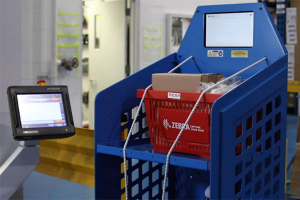Building the Smarter Warehouse: Warehousing 2020
Redefining Supply Chain Automation in the Age of Digital Technology: North America Report - The online survey asked IT and operations personnel in the manufacturing, retail, transportation and wholesale market segments to share their insights and business plans over the next five years, in light of a rapidly changing industry.
The exponential growth of omnichannel shopping and ever-burgeoning demand for faster merchandise deliveries is redefining the supply chain’s distribution of consumer products goods.
A seminal shift in how shoppers increasingly buy via multiple touch points - online from desktop computers, mobile devices and in-store - has created the need for the “smarter” warehouse to serve today’s connected consumer.
As retailers look to merge their brick-and-mortar and online operations to cut costs and boost efficiency, warehouse management systems must keep pace.
This wave of next generation, technology-enhanced warehouses is bringing unprecedented levels of real-time visibility into organizations’ assets, people and transactions across a myriad of industries, from discrete manufacturers in automotive, electronics and machinery to food and beverage processing companies, to the healthcare and pharmaceutical sectors, to name just a few.
But it’s the transformation of the supply chain ecosystem that has prompted operations professionals to take a hard look at upgrading their warehouses with an eye towards boosting productivity, slashing transportation costs and expediting merchandise shipments.
As a result, supply chain networks are poised to undergo an extreme makeover over the next few years. Indeed, the retail, wholesale, transportation and logistics sectors are transitioning to “best-of-breed” warehouse management systems that take automization to new heights - from equipping workers with mobile devices that increase the speed and accuracy of order picking to the rollout of radio frequency identification technology (RFID) for real-time inventory visibility.
At the same time, executives plan to roll out more warehouses, while expanding their size and retrofitting them from legacy systems into highly mechanized, leaner facilities. This approach is designed to reduce costs and increase responsiveness to customers.
The technology overhaul of warehouse management systems has become something of an industry mandate: A nimble supply chain is critical to competing in the era of digital shopping.
Online sales in the U.S. are projected to reach $523 billion in the next five years, up 56 percent from $335 billion in 2015, according to Forrester Research.
Warehouses must be equipped to handle the attendant deluge of goods moving through the product-delivery pipeline.
What’s Related




Favorites





